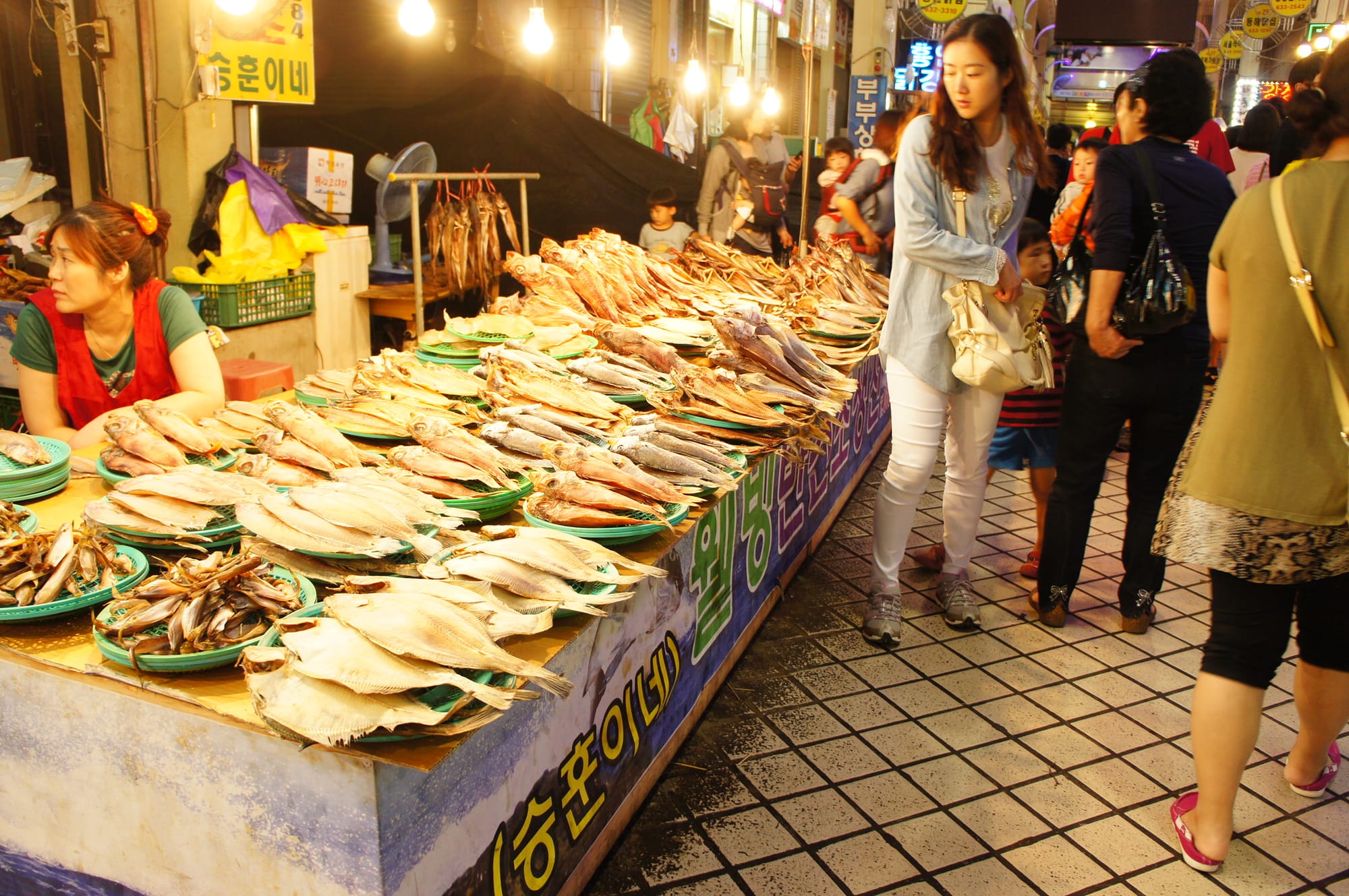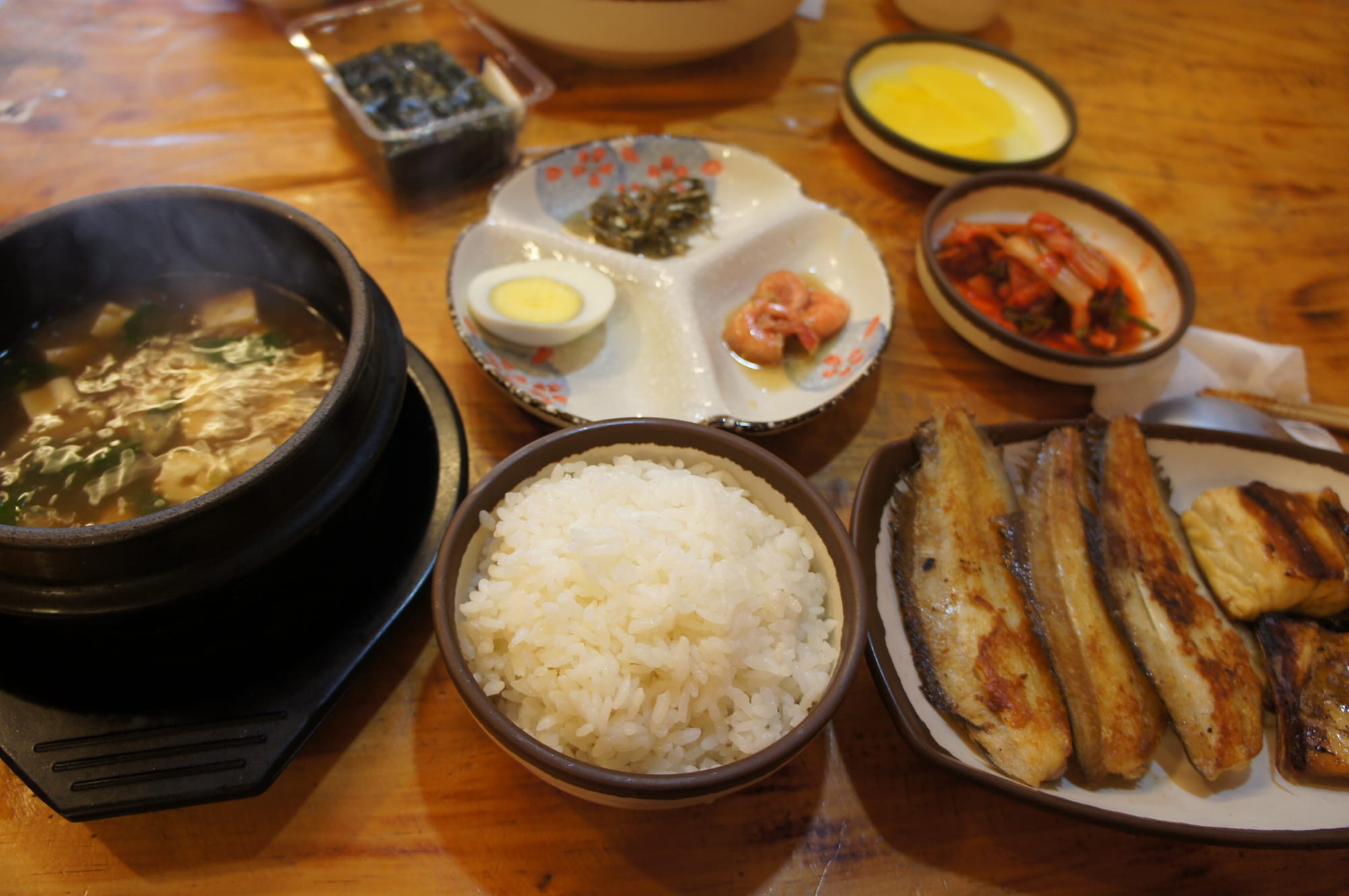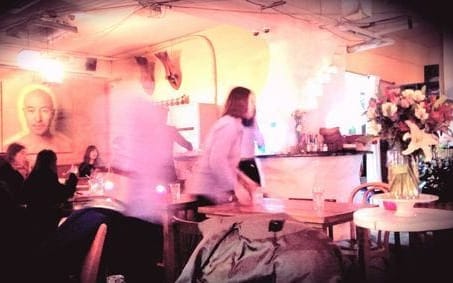September, Chuseok and a Sokcho-trip

Originally posted on September 27, 2013.
I am finally back with a post about my Chuseok holidays.
A week ago my parents, the adventurers, came to Seoul for a short visit which is why I have been also busy being a tour guide. It was a good thing to have my parents here as I had a good occasion to visit many places here that I did not see yet. As my adventurous parents have never shied away from exploring new places, they did that also during the time I had classes and therefore could not join them. As Seoul is very lively they enjoyed their time here, never felt uncomfortable and experienced the Koreans as friendly people who never made them feel uncomfortable although they don't speak english very well.
Besides their visit I have never felt alone here as I have made new good friends and eventually settled down to my new life in Seoul very quickly.
But still I needed some time to relax so one of my best friends here, Daniele who is from Brazil (actually she is the 3rd generation of japanese migrants in Brazil) and I decided to make a short-trip during Chuseok.
Chuseok is one of the biggest holidays in Seoul and is the time where a huge stream of people from Seoul travel to their hometowns outside from Seoul to visit their families. Since Seoul has a population density of 217.000/km² which is almost twice that of New York you can probably imagine the impact this has to Seoul's traffic. For a comparison: My hometown Hamburg the second largest city in Germany (which I really miss) has a density of only 2.322/km².
From Seoul to Sokcho
So our master plan was to go on Thursday which is the main day of Chuseok because this is the day where all Koreans are celebrating with their families at home. So we assumed the streets must be empty on that day.

Our destination was Sokcho, a small city on the East coast of Southkorea with a beach and the very big and famous Nationalpark called Seoraksan. It was our first time to travel by bus in Seoul so we bought our tickets one day before at the bus station.
The next day we left our dormitory at 6 am to arrive on time at the Gangbyeon bus station where our bus departed at 7 am. It takes about 45 min. from Ewha Womans University by subway. A good part thing of waking up early was that we could watch the sunrise over Seoul on our way.
Arriving on time we relaxed in our superior seats in the bus. The seats could be adjusted to a lying seat. Traveling by bus is so comfortable in Korea! And the ticket price was converted only about 15€. We really liked the space and the bus seemed to be new and very safe.
We felt very relaxed to drive out of the city and seeing another side of Korea with its' beautiful green, mountainous landscape with many rivers.



Successful with our plan we arrived exactly after 2 and a half hours later without any traffic jam in Sokcho. The beach was only 5 minutes away from the bus station, so we went swimming right away. The water of the East Sea was very clear and not too cold.



In the afternoon we walked towards the small harbor which is known for its' fresh Sashimi and of course we tried it! Hmm, I have to say that I prefer the Japanese Sashimi more, but it was still good. (Comment on May 28, 24: In the second half of my year in Seoul however I will come to love hwae aka. korean Sashimi.)

At the harbour we found a very nice guesthouse, so we decided to stay overnight spontaneously. After a fresh shower we explored Sokcho during sunset and walked to Abai village which is well-known as it was the filmset for the famous Korean drama called 가을동화 „Autumn in my heart“ in 2000.

On our way we always saw the outlines of the mountains at the skyline of the city. We passed Seorak-daegyo Bridge and had a very special view on the pretty Cheongchoho Lake that was dyed in a very pretty, special and almost magical sunset light in the mix of blue, yellow and purple.


We enjoyed the dawn view on the Seoraksan National Park and Cheongchoho Lake from the bridge we crossed.
Under the bridge we found little boats on which we could cross the lake and arrived in Abai village. Abai village and the city itself is very small and obviously not as modern as Seoul. The architecture somehow seems to be partly from the times of the 60s or 70s. I liked this appearance, which gave the city it's own romantic charm.







But as it was Chuseok despite of the Night fish market the city was pretty empty so we went back to the Harbour. Telling from the much more crowded Harbour area, apparently this was one of the places where the locals go during Chuseok. So we had diner and enjoyed the small private Chuseok fireworks.
Seoraksan National Park
After our breakfast we checked out on the next morning and went to the Nationalpark to see the mountains. Well, one thing we should have suspected was that maybe ALL Koreans and tourists might have the same idea as Seoraksan Nationalpark is a famous hiking place especially during holidays so ... it was veeery crowded. Anyways we walked around and visited the Temple. It was after all a beautiful landscape sight.









Sinheungsa Temple at Seoraksan (mountain).
Our next stop was the Hot Spring Spa. The spa is a traditional Korean bath house called Jjimjilbang which you have to enter naked and is separated for women and men. It can be compared with Saunas but you have much more hot pools with different temperatures, massage pools and cold pools that are filled with the spring water. Before entering the pools everyone has to wash themselves. Koreans like to scrub their body with a scrubbing „glove“ during the bath. After bathing in the pools you can relax in a the korean-style garden outside. We had a very good, relaxing and clean time.
Our trip almost ended as we headed back to the bus station. Still we had time for lunch: This time I ordered a home cooked style meal with fried fish and it was of course really delicious.


On our way home we were lucky and only had 2 hours of traffic jam.
Finally arriving back at Ewha we went to sleep with new experiences and special memories from our unique short-trip. Daniele, thank you for your friendship and for these special days! :)



